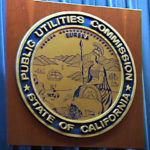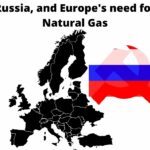Subsequent to the “Camp Fire” which destroyed Paradise California, on November 8, 2018, President Trump blamed California’s forestry policies saying that “There is no reason for these massive, deadly and costly forest fires in California except that forest management is so poor,” and Trump threatened to withhold federal payments to California. Trump has repeatedly blamed forest management in California, when climate change is clearly increasing the fire risk thanks to years of low rainfall and increasing temperatures. It doesn’t matter if forest management is bad, the forests are dry tinder and any spark can blossom into a huge fire very quickly. Further, the area in question is a National Forest managed by federal authorities. Finally, there is a report from PG&E of a power line problem at the epicenter of the fire, near Pulga California, fitting a pattern of lax maintenance that has caused several other fires.
There are two massive wildfires currently active in California. The Camp Fire is one, which has more-or-less destroyed Paradise and is now threatening Chico California. The other is in Ventura County, and is threatening both Thousand Oaks (which just suffered the latest mass gun shooting earlier this week), and Malibu. Curiously it is late in the year, most wildfires occur in the summer. In this post I’ll focus on the “Camp Fire” because a) I have a PG&E report indicating a very likely cause, b) I have visited Pulga many times and know the terrain very well.
The incident began the morning of November 8, 2018. PG&E sent a report (embedded below) to the California Public Utilities Commission (CPUC) saying:
On November 8, 2018, at approximately 0615 hours, PG&E experienced an outage on the Caribou-Palermo 115 kV Transmission line in Butte County. In the afternoon of November 8, PG&E observed by aerial patrol damage to a transmission tower on the Caribou-Palermo 115 kV Transmission line, approximately one mile north-east of the town of Pulga, in the area of the Camp Fire. This information is preliminary.
News reports are that the fire began that morning near Pulga, and spread down the valley towards Chico, reaching Paradise CA by nightfall where most of the town was destroyed. If you want to look at the terrain, see: https://goo.gl/maps/oX2ZmL77AYA2![]() Heading north-east from Pulga is a fire break, and zoom in close enough you’ll see the power lines. Go a little farther north you’ll find the remnants of Mayaro, which in the late 1800’s was a famous resort town that is now just derelict ruins. Next to Mayaro is Camp Creek, and next to Camp Creek is a little hydro-electric generation facility where a large pipe runs down the mountain to a concrete block building containing turbines. That facility feeds into this power line. As you look at the map, understand that the terrain is extremely rugged and is very beautiful. Most of this is National Forest land, but the town of Pulga is not in the National Forest. FWIW, some friends of mine bought Pulga in 1994 (it’s possible to buy a whole town if it’s small enough), and I visited several times. It is saddening to realize that little town is now probably wiped off the map.
Heading north-east from Pulga is a fire break, and zoom in close enough you’ll see the power lines. Go a little farther north you’ll find the remnants of Mayaro, which in the late 1800’s was a famous resort town that is now just derelict ruins. Next to Mayaro is Camp Creek, and next to Camp Creek is a little hydro-electric generation facility where a large pipe runs down the mountain to a concrete block building containing turbines. That facility feeds into this power line. As you look at the map, understand that the terrain is extremely rugged and is very beautiful. Most of this is National Forest land, but the town of Pulga is not in the National Forest. FWIW, some friends of mine bought Pulga in 1994 (it’s possible to buy a whole town if it’s small enough), and I visited several times. It is saddening to realize that little town is now probably wiped off the map.
According to Wired![]() , the Camp Fire started at 6:30 AM (about 15 minutes after PG&E reported the outage) and traveled 11 miles in 11 hours, which is a tremendous speed for a wildfire. It burned 70,000 acres in 24 hours and at the time Wired wrote that report it had spread to 100,000 acres. The smoke from the fire is creating unhealthy conditions as far away as San Jose (where I live), where the air quality index has been in the unhealthy range for the last two days. What fueled this fire? On the one hand it’s the dry vegetation, and on the other it’s a strong wind from the East flowing down the mountains. That wind not only propelled the fire, it also dried the vegetation even further.
, the Camp Fire started at 6:30 AM (about 15 minutes after PG&E reported the outage) and traveled 11 miles in 11 hours, which is a tremendous speed for a wildfire. It burned 70,000 acres in 24 hours and at the time Wired wrote that report it had spread to 100,000 acres. The smoke from the fire is creating unhealthy conditions as far away as San Jose (where I live), where the air quality index has been in the unhealthy range for the last two days. What fueled this fire? On the one hand it’s the dry vegetation, and on the other it’s a strong wind from the East flowing down the mountains. That wind not only propelled the fire, it also dried the vegetation even further.
This Facebook posting from the National Weather Service office in Sacramento clearly shows the effect of the wind coming from the east. The picture comes from the afternoon of November 8, the day the fire began.
The Wired article gets us to the other point. The backdrop behind this story is climate change and the warming climate. The weather is already a few degrees warmer than it should be this time of year, and California has famously had several years of extreme low rainfall and a hotter-than-normal climate. Several dry years left dry vegetation across the state, and immediate conditions (the strong wind from the east) made it even dryer. Adding an unfortunate power line issue made for a kind of perfect storm.
Yeah, what he said. Rainfall has been abnormally low, and the vegetation is dry.
The National Weather Service is warning that current weather conditions mean fire risk remains high.
Look again at the NWS Sacramento picture and think about all the terrain which is NOT burning in this picture. This one fire is causing major havoc, it destroyed a whole city and is threatening another, the smoke plume is creating unhealthy air conditions in the SF Bay Area 150 miles away, all that from one fire. If climate change predictions are correct this specific terrain will get dryer and dryer, and there will be a time when it’s not just one fire of this magnitude but two or three. How will California’s fire fighters be able to respond to that many fires? How unhealthy will our air be? What is the climate change impact of releasing the carbon stored in those forests?
The cause of this fire is not forestry management practices, but the warming climate and dry local conditions. And probably lax maintenance on PG&E’s part — because this is not the first massive fire started because of PG&E power lines. According to the NY Times![]() PG&E’s liability for the Tubbs Fire. that destroyed part of Santa Rosa last year, is over $17 billion. That fire, too, was sparked by downed PG&E power lines. Maddeningly
PG&E’s liability for the Tubbs Fire. that destroyed part of Santa Rosa last year, is over $17 billion. That fire, too, was sparked by downed PG&E power lines. Maddeningly![]() , the California Legislature has passed legislation allowing PG&E and other utilities to pass along such costs to their customers rather than having the costs be carried by the utility companies.
, the California Legislature has passed legislation allowing PG&E and other utilities to pass along such costs to their customers rather than having the costs be carried by the utility companies.
When President Trump blames California’s forestry management practices, as he has done several times this year, he is lying, as he does continuously.
The LA Times![]() made it even clearer just how many ways President Trump is incorrectly blaming forestry management.
made it even clearer just how many ways President Trump is incorrectly blaming forestry management.
- The fires in southern California are “urban interface fires” meaning they’re occurring in places adjoining urban areas, and are not under forestry management.
- Forestry management is not a factor in the Camp Fire described above, nor with the Tubbs Fire that destroyed part of Santa Rosa last year.
- With the Camp Fire you have dry grass and other dry vegetation among scattered pine and oak trees.
- With the Tubbs Fire, the terrain is covered by grassland with the occasional oak tree, and is also not under forestry management. Instead there are a ton of vineyards – it being Napa County and Sonoma County.
Another NY Times![]() article notes that:
article notes that:
Nearly 60 percent of California’s 33 million acres of forestland are owned by the federal government, according to a 2018 report by the California Legislative Analyst’s Office. An additional 25 percent of the state’s forests are privately owned, and about 14 percent are owned by industrial owners like timber companies. State and local governments own just 3 percent of the state’s forests.
As is par for the course with President Trump, he is flatly wrong. Further he is wasting all our time by forcing us to evaluate and rebut his lies.
Governor-Elect Gavin Newsom responded:
“At this moment, thousands of our brother and sister firefighters are putting their lives on the line to protect the lives and property of thousands,” said Brian Rice, the president of the California Professional Firefighters, which represents more than 30,000 firefighters and paramedics. “Some of them are doing so even as their own homes lay in ruins.”
Increased frequency of forest fires is one of the predicted consequences of global warming. Scientists have been warning of this and other problems, like increased wars, conflicts over resources, resource shortages, and more, for years.
Electric-Safety-Incident-Reported-Pacific-Gas-Electric-Incident-No-181108-9002
- Is there enough Grid Capacity for Hydrogen Fuel Cell or Battery Electric cars? - April 23, 2023
- Is Tesla finagling to grab federal NEVI dollars for Supercharger network? - November 15, 2022
- Tesla announces the North American Charging Standard charging connector - November 11, 2022
- Lightning Motorcycles adopts Silicon battery, 5 minute charge time gives 135 miles range - November 9, 2022
- Tesla Autopilot under US Dept of Transportation scrutiny - June 13, 2022
- Spectacular CNG bus fire misrepresented as EV bus fire - April 21, 2022
- Moldova, Ukraine, Georgia, Russia, and the European Energy Crisis - December 21, 2021
- Li-Bridge leading the USA across lithium battery chasm - October 29, 2021
- USA increasing domestic lithium battery research and manufacturing - October 28, 2021
- Electrify America building USA/Canada-wide EV charging network - October 27, 2021



















Pingback: California wildfires 2020, over 2 million acres burned – The Long Tail Pipe
Pingback: CPUC aims regulations at utilities over power shut-off events – The Long Tail Pipe